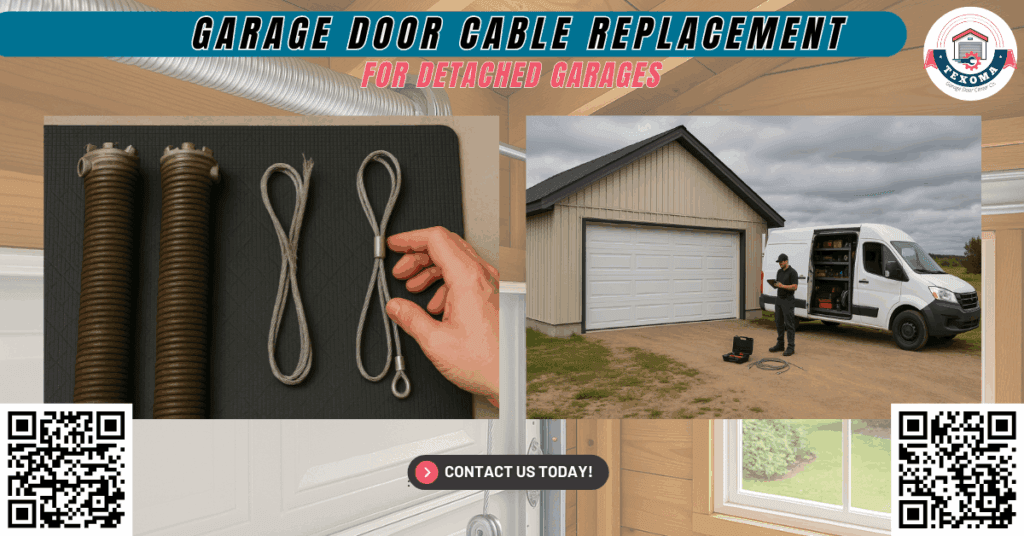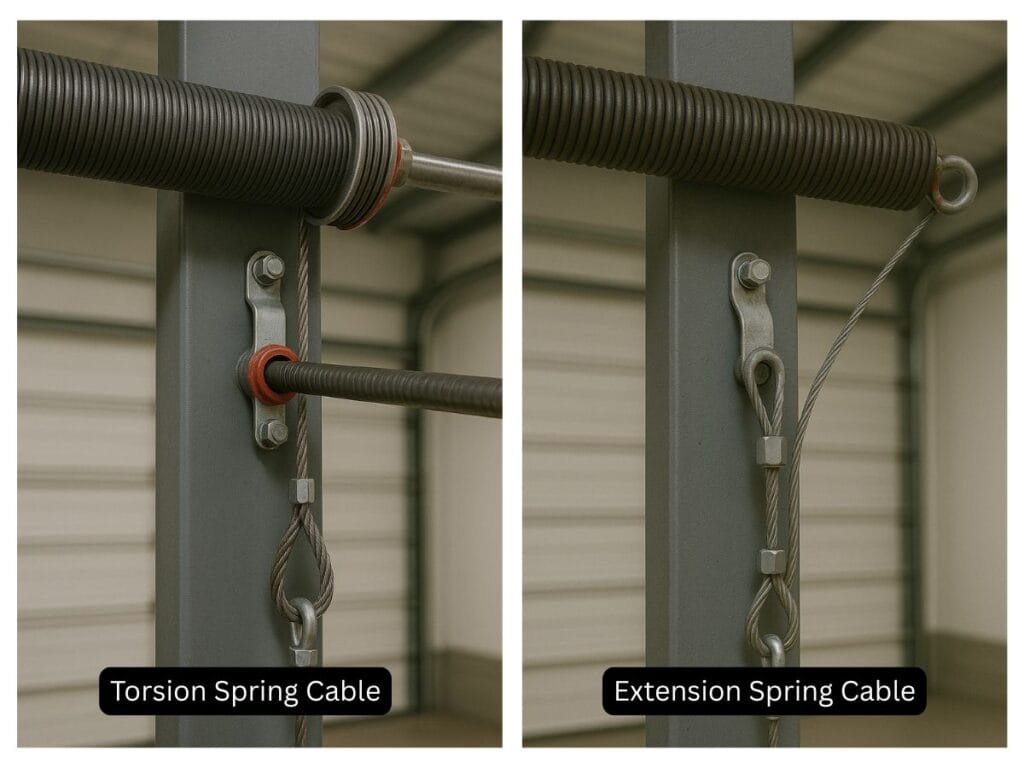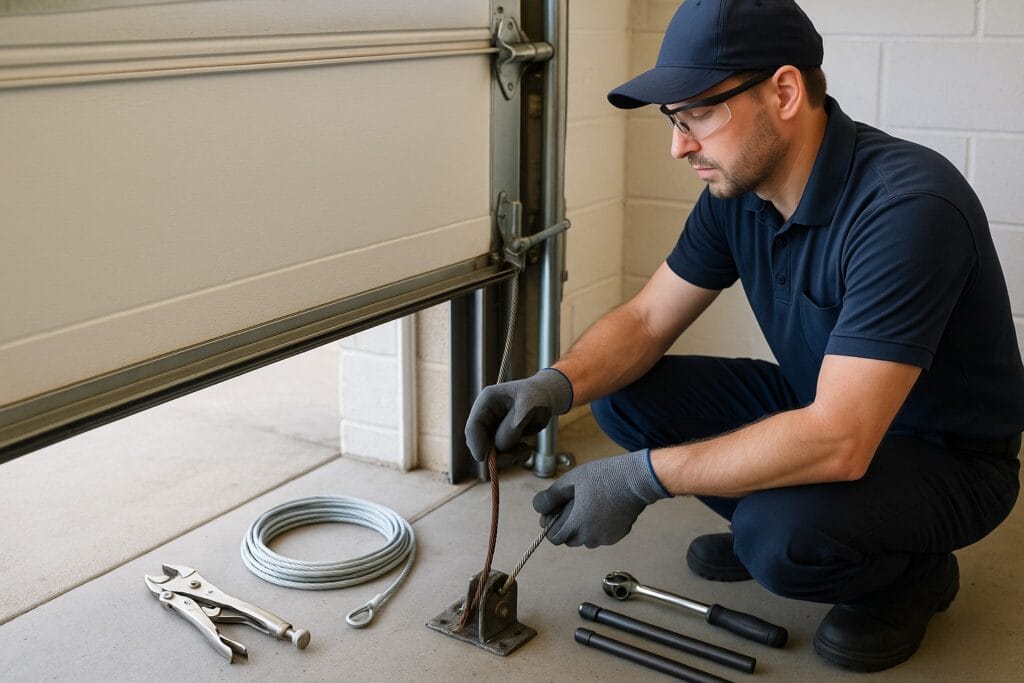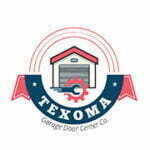Garage Door Cable Replacement for Detached Garages

A few months ago, a family in Sherman, TX, called us at Texoma Garage Door Center Co. in distress. Their garage door, located in a detached garage behind their home, had suddenly slammed shut late at night. They heard a loud snapping sound, but didn’t think much of it until the next morning when the garage door wouldn’t open. The problem? A broken garage door cable. The vehicle was trapped, and the family couldn’t get to work or school on time. This scenario is more common than most people realize, especially with detached garages that don’t receive the same attention as attached ones.
Garage doors operate under high tension and rely on a system of springs and cables to function smoothly and safely. The garage door cable is one of the most critical parts of the garage door system. It supports the weight of the door, ensuring it opens and closes in a balanced, controlled manner. When cables break, it compromises the safety and operation of the entire garage door. This is particularly problematic for detached garages where regular maintenance may be overlooked, and access to professional repair services may be delayed.
At Texoma Garage Door Center Co., we specialize in garage door cable replacement, repair, and comprehensive garage door services for both residential and commercial clients in Sherman, TX, and nearby areas. This guide will provide you with a thorough understanding of garage door cable replacement for detached garages, including how to identify issues, the replacement process, safety precautions, and why it’s crucial to trust professionals. We aim to make this guide easy to understand for homeowners of all ages, including those who are new to home maintenance or working with garage door systems.
Understanding Garage Door Cables and Their Function
Garage door cables are heavy-duty metal wires that work alongside the garage door springs to lift and lower your door. These cables are wound tightly and connect to the bottom bracket of the door and the cable drum near the torsion tube. The system relies on perfect tension and alignment to ensure smooth operation. Without properly functioning cables, the door becomes unbalanced, putting stress on the opener, tracks, and other components.
Types of Garage Door Cables
- Torsion Spring Cables: These are used in systems with torsion springs, mounted above the door on a torsion tube. They wrap around a cable drum as the door opens. This setup provides a smoother and quieter operation and is commonly found in newer garage door systems.
- Extension Spring Cables: Found in older or smaller garage door systems, these run along the horizontal tracks and use a pulley system. While less expensive, they can be more prone to wear and require more frequent adjustments.

In detached garages, both types may be used, depending on the age and design of the door system. Over time, these cables can fray, stretch, or corrode due to exposure to the elements. They are often one of the first components to fail in an older garage door setup.
Why Detached Garages Face More Cable Problems
Detached garages are more vulnerable to cable damage for several reasons:
- Increased Exposure: Detached garages are often less insulated and more exposed to rain, humidity, and temperature fluctuations. This can cause cables to rust, springs to weaken, and moving parts to corrode. In climates like Sherman, TX, with hot summers and wet winters, weather-related wear can be accelerated.
- Lack of Regular Maintenance: Homeowners frequently prioritize maintenance on attached garages. Detached garages often serve as storage spaces and receive less attention. As a result, wear and tear may go unnoticed until a major failure occurs.
- Manual Operation: Many detached garages lack automatic garage door openers. Manual operation increases wear on door cables, bottom brackets, and pulleys. Frequent manual lifting can misalign cables and add strain to the spring system.
- Rodent or Pest Interference: Infrequently used detached garages can attract rodents, which chew through wiring and even damage the cable housing or insulation. Rodents can also build nests near cable drums, creating blockages or jamming mechanisms.
- Age and Installation Quality: Detached garages are often older than the main house and may have outdated hardware or improper installation from decades past.
Routine inspections and preventive maintenance are essential to keep detached garage doors in top shape. Addressing small issues early can prevent larger, more expensive repairs later.
Common Signs of Garage Door Cable Damage
Understanding when to replace a garage door cable is critical. Here are some warning signs to watch for:
- The door slams shut or closes unevenly: This suggests the cables are not distributing weight evenly, often due to one being loose or broken.
- One side of the door is higher than the other: Uneven lift usually means one cable has more tension than the other, or one has detached entirely.
- Frayed or visibly worn cables: You might notice thin wires sticking out or rust forming along the cable. This is a clear indicator that replacement is needed.
- Garage door stuck in the open or closed position: When cables fail, the door may become immobile. This can also damage the opener if it continues trying to lift a stuck door.
- Loud bangs or popping noises: These sounds may indicate a cable snapping or a spring releasing tension abruptly.
- Cables have come off the drum or pulleys: When the cable comes off the drum, the door can get jammed or drop dangerously.
Being proactive when you notice these symptoms can save you from costly repairs and potential injuries.
The Dangers of DIY Cable Replacement
Garage door cable replacement is not a typical DIY home repair. Cables and springs operate under high tension. One wrong move can result in serious injury. Attempting repairs without the right tools, experience, and personal protective equipment (PPE) can lead to broken fingers, eye injuries, or worse. Even seasoned handymen can find this task dangerous without the proper training.
Professional garage door technicians use specialized tools to adjust tension, remove old cables, and reinstall new ones safely. Tools such as winding bars, locking pliers, and setscrews are essential, and even minor miscalculations can result in cable failure or further damage to the garage door system.
We always recommend calling for professional help, especially for detached garage doors where accessibility, lighting, and ventilation may be limited. A professional ensures not just the replacement of the cable, but also an inspection of the entire garage door system to prevent future problems.
Our Step-by-Step Garage Door Cable Replacement Process
At Texoma Garage Door Center Co., our process ensures safe, effective, and long-lasting results:
1. Safety First
- Disconnect the garage door opener to avoid accidental activation.
- Secure the door in place using clamps or locking pliers on the tracks.
- Wear safety glasses, gloves, and appropriate PPE before starting.
- Double-check tension on springs to prevent unexpected releases.
2. Inspection
- Examine the entire garage door system: springs, drums, pulleys, bottom brackets, and opener.
- Look for rust, corrosion, wear, or loose parts.
- Assess the condition of the garage door rollers, tracks, and hinges.
3. Remove the Old Cable
- Carefully unwind tension from the torsion springs using winding bars.
- Detach the old cable from the bottom bracket and cable drum.
- Inspect the drum for wear or sharp edges that could damage the new cable.
4. Install New Cable
- Attach the new cable securely to the bottom bracket.
- Wrap the cable around the drum with the correct number of turns.
- Make sure cables on both sides are equally tight and properly aligned.
5. Balance and Test
- Reapply spring tension slowly and precisely.
- Test door movement for smooth operation and proper balance.
- Reconnect the garage door opener and complete a full system test.
- Make any necessary adjustments to ensure the door operates safely and efficiently.
This process typically takes 1 to 2 hours, depending on the system’s complexity and condition.

Cable Lifespan and When to Replace
The average lifespan of garage door cables is between 7 to 10 years under normal conditions. However, detached garages in Sherman may need replacements more frequently due to environmental factors such as high humidity, extreme temperatures, or infrequent use.
Schedule a Replacement When:
- Cables appear rusty, frayed, kinked, or stretched.
- There are signs of uneven tension or door imbalance.
- The door is not operating smoothly, making noises or dragging.
- You’ve already replaced springs (it’s smart to do both).
- The cable drum shows signs of wear, or the cable has slipped off.
Proactive replacement prevents larger issues, such as a broken garage door that damages panels or endangers your family. Replacing cables before they fail can also extend the lifespan of the opener, springs, and rollers.
Maintenance Tips for Detached Garage Door Cables
Routine maintenance can double the lifespan of your cables and keep your garage door system operating safely. Here are comprehensive tips to keep your system in peak condition:
Easy Steps for Maintenance:
- Inspect monthly: Use a flashlight to check cables for frays, rust, or loose strands.
- Lubricate parts: Use silicone-based lubricant on hinges, rollers, and pulleys. Avoid petroleum-based lubricants, which can attract dust.
- Keep it clean: Sweep out debris, clear away cobwebs, and prevent water accumulation near the garage door tracks.
- Look for pests: Seal entry points and look for rodent droppings or nests near drums and cables.
- Listen during operation: Unusual sounds like grinding or squeaking are warning signs of cable, spring, or opener issues.
- Tighten bolts and setscrews: Loose hardware can affect tension and alignment.
- Test door balance: Disconnect the opener and manually lift the door halfway. If it stays in place, it’s balanced. If not, call for service.
Costs of Garage Door Cable Replacement in Sherman, TX
Understanding costs helps you plan better. Prices vary depending on the garage door type, the extent of damage, and whether other parts need replacement. Below is a typical cost range for services in Sherman:
Service | Average Cost |
Single cable replacement | $90 – $150 |
Full cable replacement (set of two) | $180 – $300 |
Emergency cable repair | $50 – $100 extra |
Cables + spring replacement package | $250 – $500 |
Drum or bracket replacement | $100 – $200 |
Our pricing is transparent, and we always offer a free estimate before starting work. We never charge hidden fees and always explain your options.
Real-World Example from Sherman
Not long ago, we helped a customer with a detached garage near downtown Sherman. They had noticed the garage door making unusual squeaking noises but ignored it. Eventually, one of the cables snapped. When our technician arrived, we found that both the torsion springs and cables were worn, and the cable drum was corroded.
We replaced the garage door springs, installed new cables, adjusted the tension, and serviced the entire garage door system. The customer signed up for our annual maintenance plan to avoid future surprises. Today, their garage door operates smoothly and safely with minimal upkeep.
Final Thoughts
Garage door cable replacement may not seem urgent until the day it snaps and your garage door stops working. For detached garages, where use is less frequent and exposure to the elements is higher, routine inspections and timely repairs are especially critical.
A well-maintained garage door system not only ensures safe operation but also protects your vehicles, storage items, and loved ones. Don’t wait for a cable to break before taking action. Whether you notice early signs of wear or just want peace of mind, scheduling an inspection can save you money and stress. Investing in preventive maintenance is always cheaper than dealing with an emergency repair or property damage.
At Texoma Garage Door Center Co., we’re proud to serve our community with dependable, high-quality service and personalized care for every garage door problem.
How Can Texoma Garage Door Center Co. Help You?
Texoma Garage Door Center Co. is your trusted partner for garage door cable replacement, repairs, and full-service garage door solutions in Sherman, TX, and surrounding areas. Our team is trained, experienced, and equipped with the right tools to handle any problem, from broken cables to faulty openers.
Here’s what we offer:
- Prompt same-day service
- Free estimates
- High-quality replacement parts
- Professional, courteous technicians
- Emergency service options
- Maintenance packages to prevent future issues
Don’t put your safety or time at risk. For garage door cable replacement or any garage door problem in your detached garage, call Texoma Garage Door Center Co. today.
📍 Address: 1733 Texoma Pkwy, Sherman, TX 75090
📞 Phone: (430) 255-5451
We’ll get the job done right—quickly, affordably, and safely.
Frequently Asked Questions (FAQs)
What causes garage door cables to wear out faster?
Excessive humidity, lack of lubrication, and misaligned pulleys or drums can lead to premature wear of garage door cables.
Are stainless steel garage door cables better than standard ones?
Yes, stainless steel cables are more resistant to corrosion and ideal for detached garages exposed to the weather.
Can garage door cables be repaired, or do they always need replacement?
Garage door cables should always be replaced, not repaired, to ensure safe and reliable operation.
How do I know if my garage door cable is the correct length?
Cable length depends on the door height and drum type; a professional can measure and match the correct specifications.
